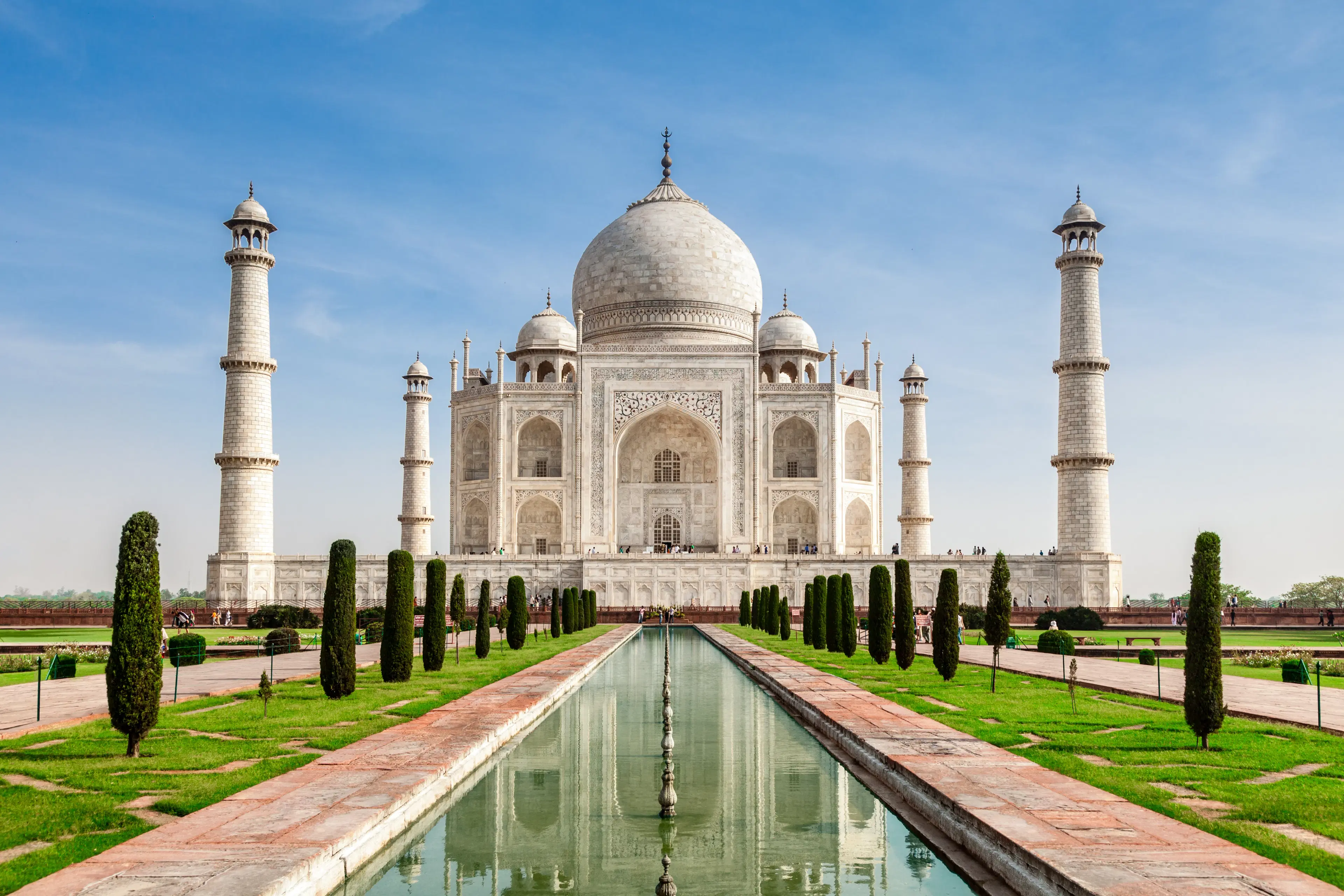
Flights
•04 min read

The Taj Mahal, an enduring symbol of love and an architectural masterpiece, captures hearts worldwide with its breathtaking beauty and cultural significance. As one of the most iconic UNESCO heritage sites in India, the monument inspires awe and admiration from every traveler who visits.
Declared a UNESCO World Heritage Site in 1983, the Taj Mahal stands out due to its outstanding universal value. Its exquisite design, remarkable craftsmanship, and unparalleled architectural excellence embody the essence of Mughal architecture. This recognition has only deepened its allure among lovers of history and culture.
Located in the historic city of Agra, Uttar Pradesh, the Taj Mahal is a crown jewel among the heritage treasures of India. Its presence alongside other UNESCO heritage sites in Agra underscores the city’s rich cultural tapestry and makes it an essential destination for those seeking to experience the wonders of Indian cultural heritage.
The legend of the Taj Mahal is steeped in romance. Commissioned by Emperor Shah Jahan in memory of his beloved wife Mumtaz Mahal, the monument stands as a testament to eternal love. This profound story transforms every visit into an emotional journey, making it one of the most renowned monuments of love in the world.
The architecture of the Taj Mahal is a visual narrative of paradise and eternity. Every element—from the pristine white marble to the intricate geometric inlays—speaks of love and devotion. Visitors often find themselves inspired by the way the monument harmoniously blends art, culture, and history.
The Taj Mahal is a quintessential example of Mughal architecture, marrying influences from Persian, Islamic, and Indian design traditions. Its majestic white marble, detailed inlays, and perfectly arranged symmetrical gardens create a canvas that dazzles the soul.

Constructed between 1632 and 1648, the Taj Mahal showcases the ingenuity of its time. Advanced engineering techniques and the contribution of skilled artisans from across Asia helped bring this magnificent structure to life. Its construction is as fascinating as the love story behind it.
One of the most enchanting aspects of the monument is its ability to change colors. Depending on the time of day and the play of sunlight and moonlight, the Taj Mahal reflects hues that range from a soft pink in the morning to a dazzling white in the afternoon, creating a magical visual experience.
Folklore adds another layer of intrigue to the Taj Mahal. Among the many myths is the idea of a 'Black Taj Mahal', a mirror image planned by Shah Jahan across the Yamuna River. While history remains silent on its realization, these legends contribute significantly to the monument's allure.
The Taj Mahal is not just a monument; it is an emblem of Indian cultural heritage and one of the most famous landmarks in India. Its universal appeal bridges diverse cultures and continues to be a source of inspiration for artists, historians, and travelers alike.
Did You Know? The Taj Mahal attracts over 7-8 million visitors each year, making it one of the top tourist destinations in the world. Its mesmerizing beauty and rich cultural significance ensure that it remains a must-visit for anyone exploring the heritage sites of India.
Exploring the Taj Mahal is a journey of discovery. Visitors wander through its pristine gardens, marvel at the intricacies of the main mausoleum, and can even explore nearby attractions that further accentuate Agra's historical richness. The entire experience is designed to evoke feelings of wonder and joy, enveloping travelers in a unique cultural narrative.

To fully appreciate this masterpiece, it is best to plan your visit during the early hours or late evenings when the crowd is minimal and the play of light creates an even more magical ambiance. This timing allows for a serene and thoughtful exploration of one of India’s most iconic landmarks.
For travelers planning a journey to Agra, Tata Neu offers flight bookings with Air India and Air India Express that ensure a smooth travel experience. The integration with premium services, along with benefits like trip insurance and exclusive loyalty rewards (Earn NeuCoins on all bookings, 1 NeuCoin = 1₹ saving), complements your visit and adds an extra layer of convenience and luxury to your travel itinerary.
Yes, the Taj Mahal was designated a UNESCO World Heritage Site in 1983 for its cultural and architectural significance.
The Taj Mahal is a cultural heritage site, celebrated for its Mughal architecture and its representation of India’s rich history.
The Taj Mahal is located in Agra, Uttar Pradesh, India, along the banks of the Yamuna River.
The Taj Mahal is called a monument of love because it was built by Emperor Shah Jahan in memory of his wife Mumtaz Mahal as a symbol of their eternal love.
Agra is also home to Agra Fort and Fatehpur Sikri, each a testament to the region's historical and cultural legacy.
The Taj Mahal is more than just a monument; it is a timeless symbol of love, history, and architectural brilliance. These ten intriguing facts have offered a window into its world—a perfect blend of romance, engineering brilliance, and deep cultural significance. Every angle of this iconic Indian monument inspires wanderlust and invites travelers to explore further into the rich history of our heritage. Embark on your next journey with Tata Neu, where streamlined travel solutions, reliable flights, and exclusive rewards merge to create a seamless travel experience that is as enriching as the destination itself.